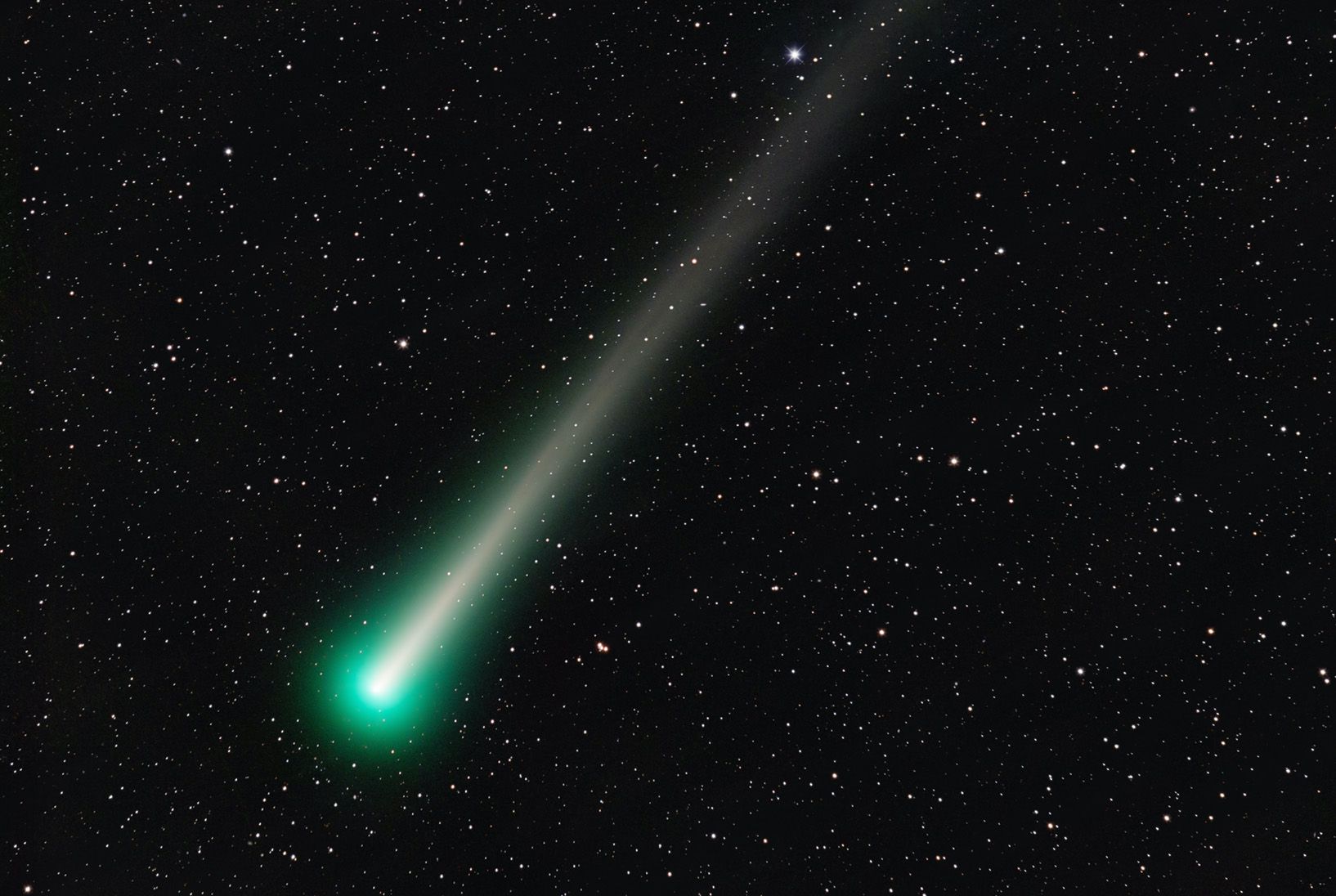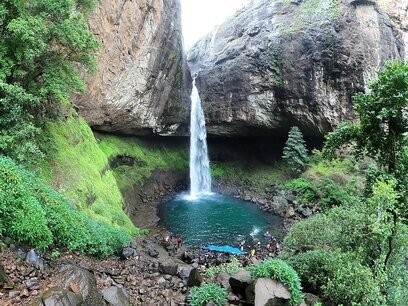Comet C/2022 E3 (ZTF)
A rare comet is a unique event to witness. These celestial bodies are made up of ice and dust. They can be seen in the night sky as bright, glowing objects with a long tail formed as the comet gets closer to the sun, causing the ice to melt and release gas and dust into space. The tail always points away from the sun due to the solar wind and can be quite spectacular to see.
Comets are relatively unpredictable and come with an element of surprise. Some comets are only visible from Earth once every few hundred years, making them even more special and worth seeing. But imagine seeing a comet after 50 thousand years! Isn’t that something great? Let us tell you all about this rare comet.
Comet C/2022 E3 (ZTF) was recently discovered. It was first observed in March 2022 by the Zwicky Transient Facility (ZTF) in California. It's an Oort Cloud Comet that originates from a spherical cloud of comets located at the outer edges of the Solar System. It's uncertain how bright the comet will be at its closest approach. However, as it's a new discovery, it is worth keeping an eye on it in case it becomes a "Green Comet." Green Comet is an informal term used to describe a comet that becomes spectacularly bright.
How Did This Comet Get Its Name?
Every letter in a comet's name serves a specific function. It helps to determine the comet's classification, the date and location of its discovery, and its discovery astronomers.
The name of the comet, C/2022 E3 (ZTF), can be written as follows:
A non-periodic comet, denoted by the prefix "C/," and the year of its discovery, "2022," are both included.
The letter and number in E3 designate the period of the year in which this comet was discovered. The letter indicates how many additional comets were observed during that time.
first half of January is represented by the letter A, the second half by the letter B, and so on, with the exception of the letters I and Z, which are never used.
The comet was spotted at the Zwicky Transient Facility, abbreviated ZTF.
The "Green Comet," or Comet C/2022 E3 (ZTF), is a name given to this celestial object informally.

Useful Tips for Viewing This Comet
- To see the comet, you will need a clear view of the horizon in the direction of the comet's path.
- The comet will be best visible from a location away from city lights and light pollution.
- You will also need a pair of binoculars or a telescope to get a good view of the comet.
- If you are using binoculars, hold them steady or use a tripod to get the best view.
- With a telescope, you may need to adjust the focus to get a clear image of the comet.
How close will Comet C/2022 E3 (ZTF) get to Earth?
The astronomer are still determining the orbit of the comet which is making it uncertain to identify its distance from the earth. Comets are unpredictable and their orbits can change based on various factors such as outgassing, dust, and even impact with other objects. So, as more data will be collected and orbit will get refined, the actual distance at which the comet will pass by Earth will change.
Comet C/2022 E3 (ZTF) is a rare comet that will be visible to the naked eye.
What is the orbital period of Comet C/2022 E3 (ZTF)?
The orbital period of a comet is the amount of time it takes to make one complete revolution around the Sun. For Oort Cloud comets, the orbits can take thousands of years to complete. The astronomers are still determining the orbital period of comet thus making its exact orbit unknown.
Will C-2022 E3 be visible from India?
Different factors such as the comet's distance from the Sun and Earth, its brightness, and the observer's location affect its visibility. Therefore, it is hard to predict whether or not the comet will be visible from India without more information about its orbit and brightness.
If you live in India, you should be able to get a glimpse of it between the end of January and the beginning of February. Its closest approach to Earth will occur on January 31 and February 1.
What is the expected color of Comet C/2022 E3 (ZTF)?
The expected color of Comet C/2022 E3 (ZTF) is currently uncertain. The color of comets can vary depending on the composition and the viewing conditions.
Most comets are typically yellowish or white in color due to the presence of water ice. However, some comets can also appear bluish or greenish due to the presence of cyanide or diatomic carbon. The color of the tail of the comet can vary as well, and is usually a pale yellow or white, but can also be blue or green.
Why is C 2022 E3 ZTF green?
The color green associated with the C 2022 E3 ZTF comet is due to the presence of the gas diatomic carbon (C2) in the comet's coma (the gaseous envelope surrounding the nucleus of a comet). As C2 gas is excited by the sun, it emits light in the green part of the spectrum, giving the coma a greenish hue. However, the viewing angle and the instrument used to observe the comet also affect its color.
Some Additional Information About The Rarest of the Rare Comet
The Comet C/2022 E3 is a periodic comet. The ZTF (Zwicky Transient Facility) at the Palomar observatory recently discovered it. This comet has a long orbital period of approximately 50,000 years and is visible in the northern night sky. The discovery was made during wide field surveys of the Corona borealis constellation using the observatory's telescope. The comet has a greenish coma and a dust tail, as well as an ion tail. These features are unusual for a comet and make it a particularly interesting object for further study.









